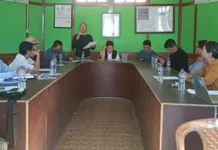[ Amar Sangno ]
From the time the Prime Minister Narendra Modi led NDA Government came into power, the Hindu-right wings could be ominously seen resurrecting; imposing radical ideologies upon people, engaging in polarised politics, along with repressive attitude towards the media.
These include several instances like the rise of cow vigilantes, mob lynching incidents in the name of religion and caste, to name a few.
In a country like India, where nationalism and self-censorship are today considered dominant views, it is obvious that the truth speakers’ (journalists) community will be targeted with oppressive approaches to silence them.
The brutal killing of brave journalist Gauri Lankesh in Bangalore on September 5 last reflected the upsurge of the intolerant culture against free thinkers and straight-speakers. It was prescient thought and her left-leaning views, for which gutsy Gauri was killed.
The truth is bitter; India ranked 136 in the 2017 World Press Freedom Ranking Index released by the International Free Speech Advocate, Reporters Without Borders on April 26, 2017. India was just three places above Pakistan (139) and one notch below war-torn Palestine(135) in the ranking. Scandinavian countries like Norway, Sweden and Finland topped the press freedom ranking with zero incidents reported on crime against media persons.
If the ranking of India is such in the Press Freedom Ranking Index, then the ranking of a small state like Arunachal Pradesh can be considered dismal.
The Committee to Protect Journalists (CPJ) in its report claimed that atleast 41 journalists were killed since 1992 in India, whose motives were confirmed. Out of the 41 journalists, 28 were killed in direct retaliation to their works and the other 27 were eliminated without unconfirmed motives, the CPJ added.
Though brutality against media persons rose up to an unbearable level, successive governments at the Centre failed to come up with a legislation that protects media persons. But efforts to muzzle independent voice of media irrespective of which party is in power at the centre, continues.
Raiding of NDTV India owner Pronoy Roy’s resident by the CBI in June last was a glaring example of intimidation attempt by the Centre.
Since its inception, the Arunachal Pradesh media has undergone enormous atrocities and intimidations from different organisations over petty issues.
It has been subjected to incidents ranging from shooting to physical assaults and ransacking of offices in order to dictate the functioning of press bodies in a short span of its history.
Sadly, no person has been charged and convicted so far for their involvement in crimes against media persons.
In the aftermath of the shooting incident at this daily’s office in July 2012, the then Chief Minister Nabam Tuki-led Government had issued arms license to 10 working journalists, considering the vulnerability of the community. It was perhaps one of the first state governments to issue en masse arms licences to journalists.
Apparently, the vulnerability of the community has weakened the fourth estate of democracy.
“State media is like a caged tiger in Arunachal”, as put by a senior journalist, who added that there are many issues in Arunachal on which the media is forbidden to comment and write upon.
“Media in Arunachal is yet to be fully liberated” he added.
Unabated atrocities against journalists in India have triggered discomfiture feelings among the members, as there is no separate law which ensures the safety and security of the media persons.
For effective and courageous functioning, the safety of the journalists should be first ensured, said another journalist, Pradeep Kumar Behera, Editor of Arunachal Observer, who himself was subjected to several physical assaults.
“Strictest act should be enacted, so that it ensures safety of media person in the state” Kumar added.
The Maharastra Government had passed the ‘Maharashtra Media persons and Media Institutions (Prevention of Violence and Damage or Loss to Property) Act, 2017’ in the assembly in April 2017, five years after the Mid Day Editor Joytimoy Dey killing incident.
Taking an example from this, perhaps this is the right time that the governments in all states across the country enact laws to protect the journalist community and media houses, so that fourth pillar of democracy functions and delivers its services to the common citizens, without any bias or fear.




